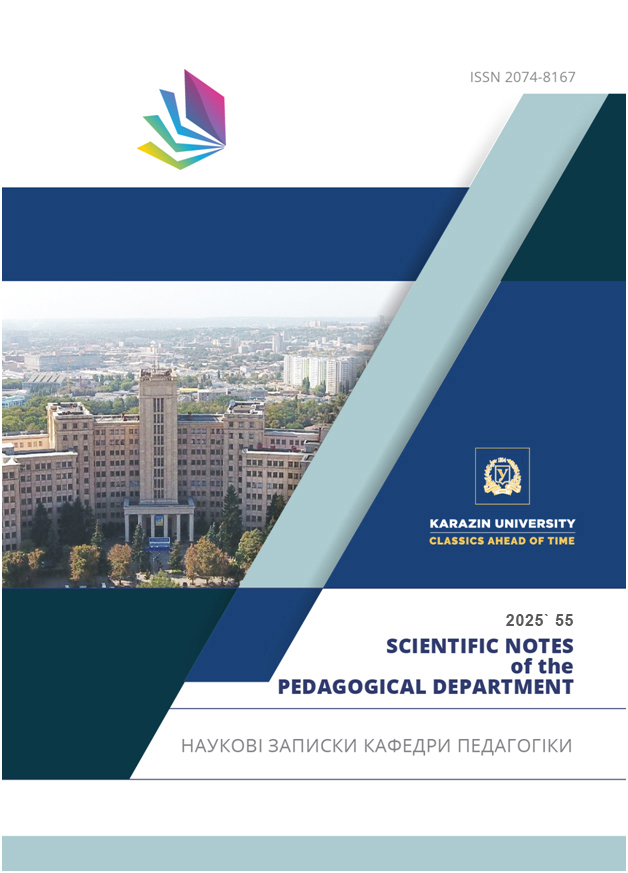Ефективність цифрових платформ для розвитку фізичної культури під час пандемії у КНР
Анотація
Пандемія COVID-19 порушила традиційні способи фізичної активності, що спричинило швидке впровадження цифрових фітнес-платформ у Китайській Народній Республіці (КНР). Це дослідження розглядає ефективність цих платформ у підтримці та просуванні фізичної культури під час локдаунів і в подальший період. Використовуючи змішаний підхід, дослідження поєднує кількісні дані з опитування 762 учасників та якісні інсайти з 30 напівструктурованих інтерв’ю і трьох фокус-груп. Результати виявили значне зростання використання цифрових платформ у період локдауну, коли середня щотижнева частота використання зросла з 1,82 сесій до 3,25. Самозвіти учасників показали покращення рівня фізичної активності. Користувачі відзначали зручність, доступність та мотиваційні аспекти функцій, таких як заняття в режимі реального часу, елементи гейміфікації та віртуальні спільноти. Однак було зазначено і бар’єри, зокрема обмежений доступ до інтернету, брак професійного нагляду та труднощі з довгостроковою залученістю. Дослідження підкреслює потенціал цифрових платформ для подолання географічних та соціальних бар’єрів у фітнесі, за умови вирішення питань інфраструктури, контролю якості та утримання користувачів. Отримані результати сприяють розумінню того, як технології можуть інтегруватися в ширші стратегії громадського здоров’я, пропонуючи гібридну модель онлайн та офлайн фітнесу як перспективу майбутнього фізичної культури в КНР.
Завантаження
Посилання
2. Braun, V., & Clarke, V. (2006). Using thematic analysis in psychology. Qualitative Research in Psychology, 3(2), 77–101. https://doi.org/10.1191/1478088706qp063oa
3. Bryman, A. (2012). Social Research Methods (4th ed.). Oxford University Press.
4. Chen, P., Mao, L., Nassis, G. P., Harmer, P., Ainsworth, B. E., & Li, F. (2020). Coronavirus disease (COVID-19): The need to maintain regular physical activity while taking precautions. Journal of Sport and Health Science, 9(2), 103. https://doi.org/10.1016/j.jshs.2020.02.001
5. Cohen, J. (1992). A power primer. Psychological Bulletin, 112(1), 155–159. https://doi.org/10.1037/0033-2909.112.1.155
6. Creswell, J. W., & Plano Clark, V. L. (2018). Designing and conducting mixed methods research (3rd ed.). SAGE Publications.
7. Davis, F. D. (1989). Perceived usefulness, perceived ease of use, and user acceptance of information technology. MIS Quarterly, 13(3), 319–340. https://doi.org/10.2307/249008
8. Field, A. (2018). Discovering statistics using IBM SPSS statistics (5th ed.). SAGE Publications.
9. Freedson, P. S., & Miller, K. (2000). Objective monitoring of physical activity using motion sensors and heart rate. Research Quarterly for Exercise and Sport, 71(sup2), 21–29. https://doi.org/10.1080/02701367.2000.11082782
10. García-Fernández, J., Gálvez-Ruiz, P., Grimaldi-Puyana, M., Angosto, S., Fernández-Gavira, J., & Bohórquez, M. R. (2020). The Promotion of Physical Activity from Digital Services: Influence of E-Lifestyles on Intention to Use Fitness Apps. International Journal of Environmental Research and Public Health, 17(18), 6839. https://doi.org/10.3390/ijerph1718683
11. IBM Corp. (2020). IBM SPSS Statistics for Windows, Version 26.0. IBM Corp.
12. Jia, C., & Ye, S. (2024). Tendencies and characteristics of public fitness behavior in the digital era: An Internet ethnography study based on the K Community in China. Frontiers in Public Health, 12, 1414837. https://doi.org/10.3389/fpubh.2024.1414837
13. Johnson, B., & Christensen, L. (2019). Educational research: Quantitative, qualitative, and mixed approaches (7th ed.). SAGE Publications.
14. Ministry of Education of the PRC. (2020). Guidelines for implementing physical education in primary and secondary schools during the pandemic. http://www.moe.gov.cn
15. Nalyvaiko, O., & Nalyvaiko, N. (2024). Education in China: Challenges and Prospects of the XXI Century. Educological Discourse, 47(4). https://doi.org/10.28925/2312-5829/2024.4.8
16. Nalyvaiko, O., Kulakova, I., Kudaieva, O., Bondarenko, A., Mkrtichian, O., & Shtonda, O. (2024). Forced Distance Learning Chinese Experience Case. Some Lessons for the Ukrainian Education System . Revista Romaneasca Pentru Educatie Multidimensionala, 16(4), 154-184. https://doi.org/10.18662/rrem/16.4/911
17. National Bureau of Statistics of China. (2022). Statistical report on internet development in China. http://www.stats.gov.cn
18. National Health Commission of the PRC. (2020). COVID-19 prevention and control measures. http://en.nhc.gov.cn
19. Palinkas, L. A., Horwitz, S. M., Green, C. A., Wisdom, J. P., Duan, N., & Hoagwood, K. (2015). Purposeful sampling for qualitative data collection and analysis in mixed method implementation research. Administration and Policy in Mental Health and Mental Health Services Research, 42(5), 533–544. https://doi.org/10.1007/s10488-013-0528-y
20. QSR International Pty Ltd. (2018). NVivo (Version 12) [Computer software].
21. Silverman, D. (2020). Interpreting qualitative data (6th ed.). SAGE Publications.
22. Stockwell, S., Trott, M., Tully, M., Shin, J., Barnett, Y., Butler, L., & Smith, L. (2021). Changes in physical activity and sedentary behaviours from before to during the COVID-19 pandemic lockdown: A systematic review. BMJ Open Sport & Exercise Medicine, 7(1), e000960. https://doi.org/10.1136/bmjsem-2020-000960
23. Wang, H., Feng, L., Zhang, Y., Zhang, F., Fu, J., Wang, M., Wu, D., Feng, Q., Liu, X., Fan, C., Wang, J., Gao, W., McDonough, D. J., & Gao, Z. (2021). Changes in Chinese Adults’ Physical Activity Behavior and Determinants before and during the COVID-19 Pandemic. Journal of Clinical Medicine, 10(14), 3069. https://doi.org/10.3390/jcm10143069
24. Wei, J., Vinnikova, A., Lu, L., & Xu, J. (2020). Understanding and Predicting the Adoption of Fitness Mobile Apps: Evidence from China. Health Communication, 36(8), 950–961. https://doi.org/10.1080/10410236.2020.1724637
25. World Health Organization. (2020). WHO Coronavirus Disease (COVID-19) Dashboard. https://covid19.who.int
26. World Health Organization. (2020). WHO guidelines on physical activity and sedentary behavior. https://www.who.int/publications/i/item/9789240015128
27. Wu, X., He, Z., Li, M., Han, Z., & Huang, C. (2022). Identifying Learners’ Interaction Patterns in an Online Learning Community. International Journal of Environmental Research and Public Health, 19(4), 2245. https://doi.org/10.3390/ijerph19042245
28. Xiang, M., Zhang, Z., & Kuwahara, K. (2020). Impact of COVID-19 pandemic on children and adolescents’ lifestyle behavior larger than expected. Progress in Cardiovascular Diseases, 63(4), 531–532. https://doi.org/10.1016/j.pcad.2020.04.013
29. Yang, J., Li, X., He, T., Ju, F., Qiu, Y., & Tian, Z. (2022). Impact of Physical Activity on COVID-19. International Journal of Environmental Research and Public Health, 19(21), 14108. https://doi.org/10.3390/ijerph192114108
30. Zhang Q. (2024). Online health communities provide important support in China. Nature human behaviour, 8(1), 8. https://doi.org/10.1038/s41562-023-01766-8
31. Zhang S, Ouyang T, Wei S-Y, Liang B-B and Zhu J-M (2022) Research on Sustainable Development of Competitive Sports in China Based on PSR and DEA Model. Front. Psychol. 13:925909. doi: 10.3389/fpsyg.2022.925909
32. Zhang, Y., & Ma, Z. F. (2020). Impact of the COVID-19 pandemic on mental health and quality of life among local residents in Liaoning Province, China: A cross-sectional study. International Journal of Environmental Research

